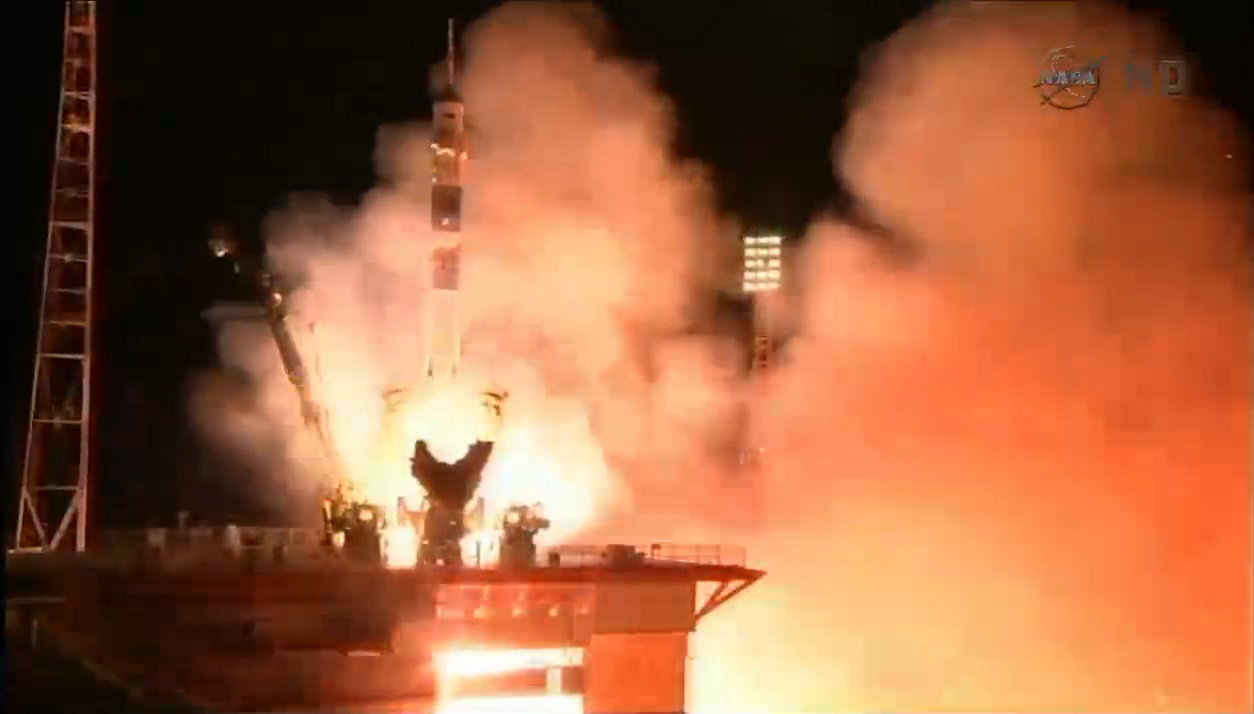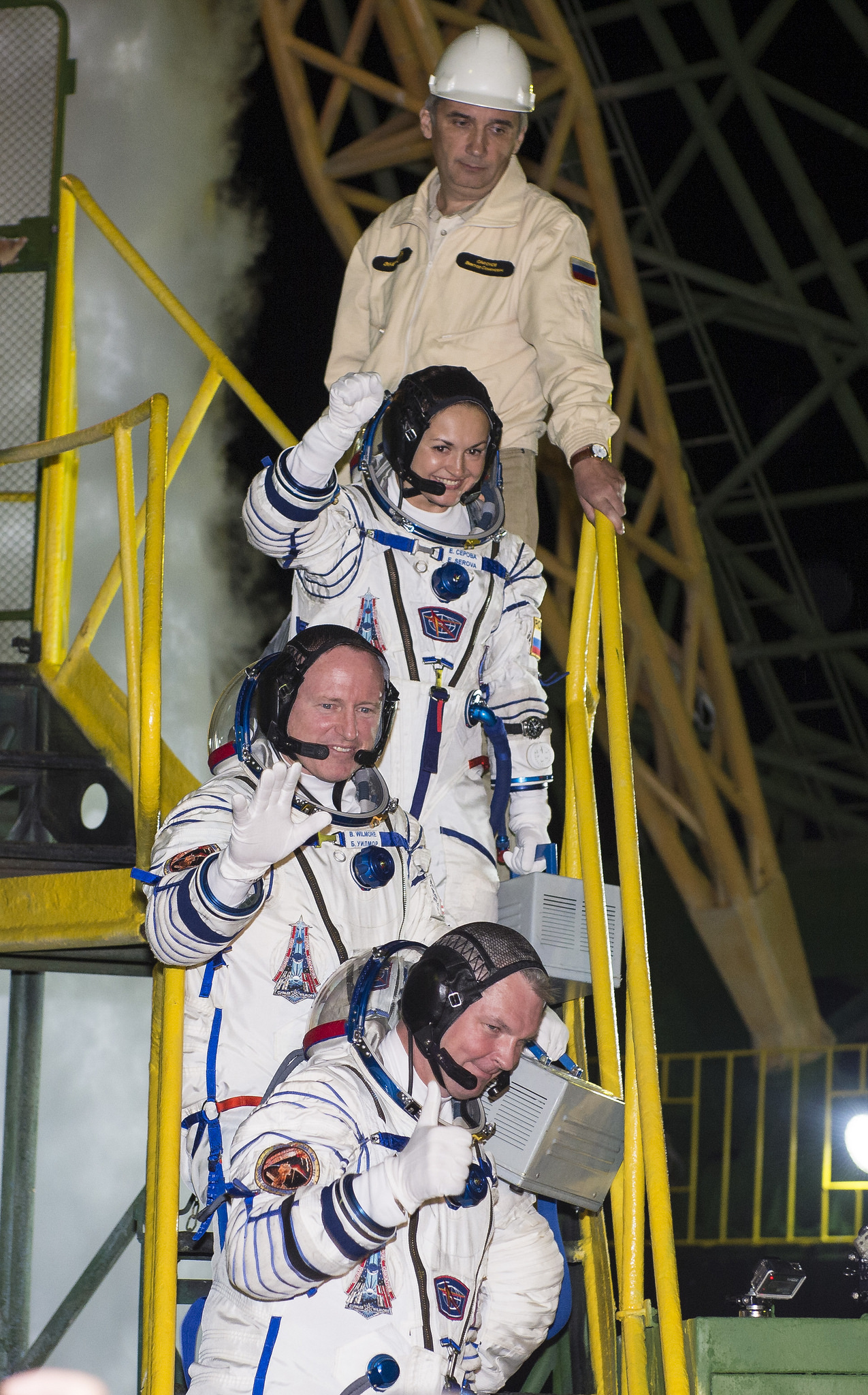
An American astronaut and two Russian cosmonauts have blasted off on a history-making trek to the International Space Station, where they will spend nearly six months working in orbit.

A Russian Soyuz spacecraft carrying NASA astronaut Barry "Butch" Wilmore and cosmonauts Alexander Samokutyaev and Elena Serova launched into space from Kazakhstan's Baikonur Cosmodrome on Thursday (Sept. 25) at 4:25 p.m. EDT (2025 GMT; 2:25 a.m. Friday local Kazakhstan time). Serova is just the fourth Russian woman to fly in space, and she'll become the space station's first-ever female cosmonaut when the Soyuz arrives late Thursday night.
"I think I feel the same thing as all other crewmembers: It's a huge responsibility; we are excited," Serova said through a translator during a prelaunch press briefing from Baikonur. [Women in Space: A Gallery of Firsts]
"We would like to say a special thank you to all people who supported us, who trained us, who built our rocket," she added. "We will do our best."
The Soyuz is scheduled to reach the International Space Station about six hours after liftoff. You can watch a live webcast of the capsule's arrival on Space.com, courtesy of NASA TV. The docking webcast will begin at 9:45 p.m. EDT (0145 GMT). Another webcast at 11:30 p.m. EDT (0330 GMT) will show the Soyuz crewmembers entering their new orbital home.
Wilmore, Samokutyaev and Serova will join the space station's Expedition 41, which currently consists of NASA astronaut Reid Wiseman, Alexander Gerst of the European Space Agency and Russian cosmonaut Maxim Suraev. This latter trio will return to Earth in November, while Wilmore, Samokutyaev and Serova will remain in orbit until March 2015.
Get the Space.com Newsletter
Breaking space news, the latest updates on rocket launches, skywatching events and more!
Wiseman radioed NASA's Mission Control at the Johnson Space Center in Houston shortly after the Soyuz launch to say he and his crewmates were able to watch a video feed live.
"That looked like a good ride," Wiseman said. "We look forward to seeing them in orbit, and we'll have dinner ready waiting for them."
Serova, 38, is the first Russian woman to leave Earth since Elena Kodakova visited Russia's Mir space station on a space shuttle mission in 1997. The other two female cosmonauts were Svetlana Savitskaya, who flew on space missions in 1982 and 1984, and Valentina Tereshkova, who in 1963 became the first woman to reach space.
An American woman didn't get to orbit until Sally Ride flew on the STS-7 space shuttle mission in 1983. But a number of female NASA astronauts have lived and worked aboard the International Space Station. Peggy Whitson, for example, became the first woman to command a space station mission when she took the reins of Expedition 16 in 2007.
While Serova is a spaceflight rookie, today's launch marks the second space mission for both Wilmore and Samokutyaev.
Russia's Soyuz spacecraft and rockets are currently NASA's only way to launch American astronauts into space since the retirement of the U.S. space shuttle fleet in 2011. Last week, NASA announced that it will fly astronauts to the International Space Station on new private space taxis built by the commercial spaceflight companies SpaceX and Boeing beginning in 2017.
Construction of the $100 billion orbiting outpost began in 1998, and it has been staffed continuously by rotating crews on roughly six-month stints since November 2000.
Follow Mike Wall on Twitter @michaeldwall and Google+. Follow us @Spacedotcom, Facebook or Google+. Originally published on Space.com.
Join our Space Forums to keep talking space on the latest missions, night sky and more! And if you have a news tip, correction or comment, let us know at: community@space.com.

Michael Wall is a Senior Space Writer with Space.com and joined the team in 2010. He primarily covers exoplanets, spaceflight and military space, but has been known to dabble in the space art beat. His book about the search for alien life, "Out There," was published on Nov. 13, 2018. Before becoming a science writer, Michael worked as a herpetologist and wildlife biologist. He has a Ph.D. in evolutionary biology from the University of Sydney, Australia, a bachelor's degree from the University of Arizona, and a graduate certificate in science writing from the University of California, Santa Cruz. To find out what his latest project is, you can follow Michael on Twitter.









